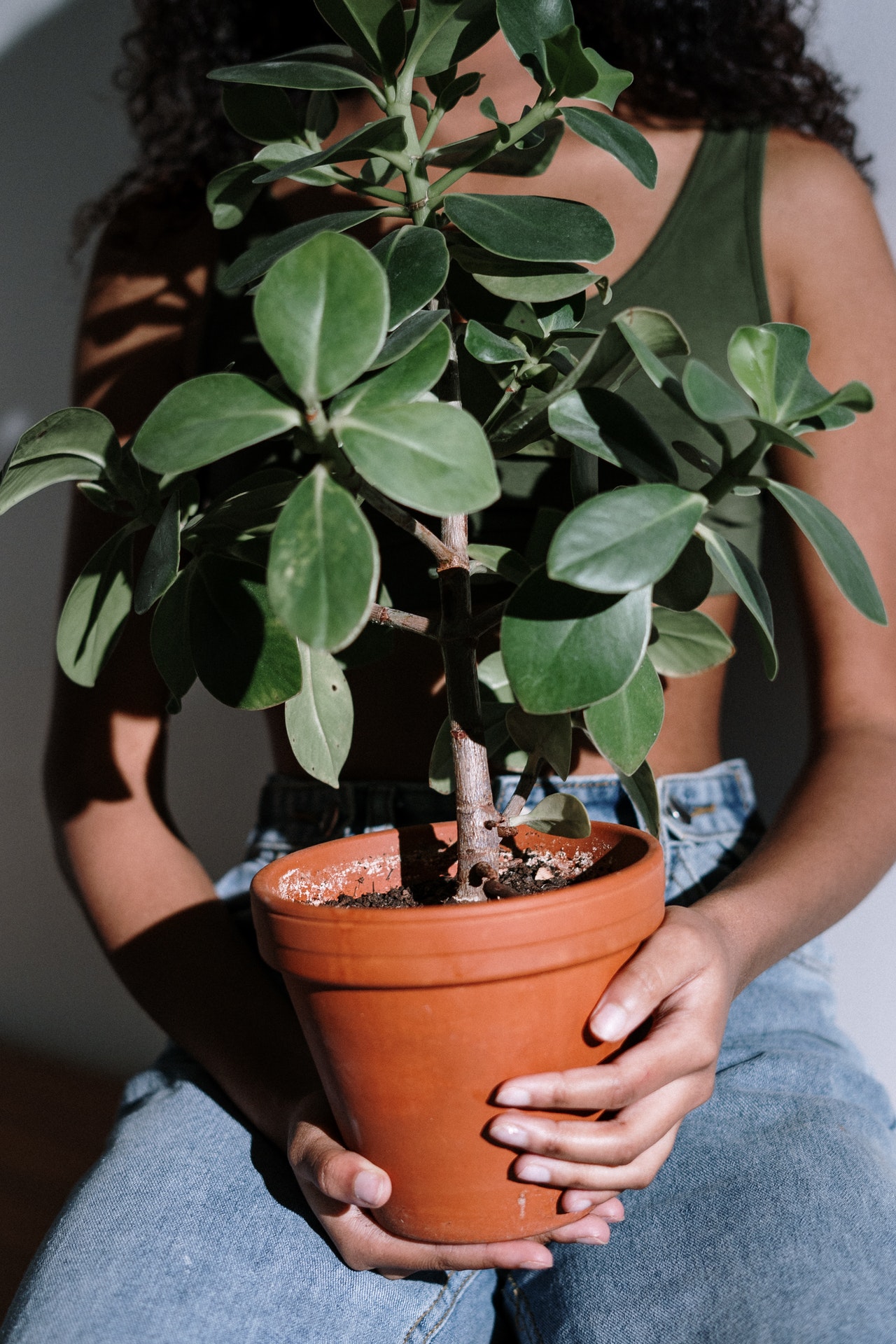Plants have gotten popular, and this makes me so happy.
I know you have noticed, but can I be honest? I think some of us are set up for failure when we purchase plants. I know that might sound harsh, but the directions on the tag are only going to help you so much.
From my plant experience, unless you are purchasing from a local nursery, chances are your plant may not be healthy from the beginning. If you purchase an already sick plant, it can waste your money and lead you to believe you have a black thumb.
This month, I’m going to give you a few tips on what not to do.
Here are the four basic elements:
>> earth
>> water
>> fire
>> air
If your plant is suffering, check these four steps. There is a difference between your plants surviving and your plants thriving! I want to help your plants thrive.
Earth
First and foremost, check your soil. What your plants are planted in is important and all soil is not created equally. A lot of premade soil is filled with additives that aren’t even good for your plants. My best advice is to purchase organic soil or make your own.
I’ve been making my own soil for a few years now, and it’s an easy recipe:
>> ¼ organic soil
>> ¼ compost
>> ¼ peat moss
>> ¼ sand and perlite
If I’m feeling fancy, I might add some mushroom compost or earthworm castings. The mix is supposed to be nice and airy. You want your plant roots to be able to breathe and get good circulation. Thick soil retains too much water and can eventually drown your plant! Speaking of drowning plants, that leads me to my next point.
Water
What you’re watering your plants with matters. Have you ever seen those white spots on your plants? It’s not a huge concern, but if you’re like me, you want your plants to look their best. Those spots are from the calcium that’s in our city water.
I use rainwater only for my plants at home and in my shop. Well water and spring water work great too. In my opinion, rainwater is naturally the best choice. Rainwater contains traces of nitrates, which is an important macronutrient essential for plant growth. You can find rainwater barrels for sale or find some cute ideas on Pinterest. It’s a simple switch that your plants will thank you for later.
Sun
Your plants might look cute in the bathroom or on that shelf you bought specifically for them. But unless they’re receiving the proper amount of sun, they will not survive. Typically, cactus and succulents need direct facing sun. In Alabama, your south facing window is what’s going to work best. If you really want your cactus and succulents to look their best, leave them outside.
Now, moving along to your leafier, tropical plants. They are not going to need as much sun and prefer some shade during the heat of the day. Not all plants are the same. If you pay attention to your plant, it will tell you its needs. Typically, drooping leaves mean your plant is thirsty, yellow leaves mean too much water, and brown leaves mean too much sun. Getting to know your plants and their needs is important.
Air
I’ve seen some really cute pots before. The first things I look for? A hole at the bottom. Drainage holes are so important for your plants to thrive. Your plants need soil, water, sun, and air. The hole allows air to pass through and excess water to drain out. You know that excess water that collects at the bottom of your pretty, Pinterest-worthy pot? It causes root rot, which is one of the fastest ways to kill your plant. Avoid it by using a pot with a hole!
I gave you the four basic elements because it’s easy to remember. (I’m also a fan of “Avatar.”) So, the next time you’re having plant issues, stop and think about these four steps and check your plants environment.
For more plant tips, stay tuned for future columns by me.
~
 Share on bsky
Share on bsky





Read 1 comment and reply